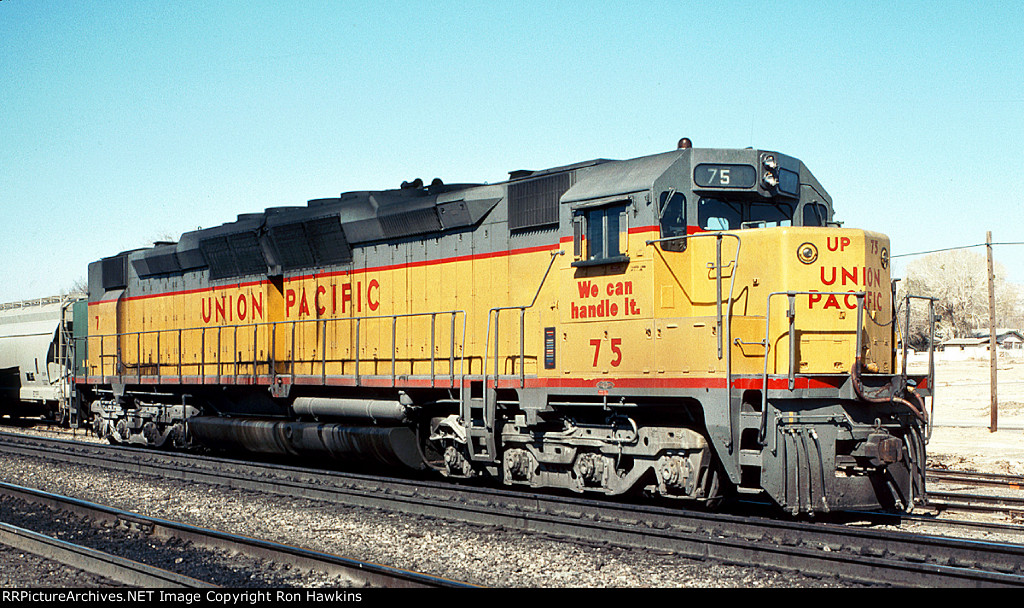Diesel of the Day 7/23: EMD DD35A
15For today, I will feature another very large diesel: the EMD DD35A. This one was a predecessor to the previously featured DDA40X, and also had a pair of engines on one very long frame. The DD35A was essentially two GP35s on a common frame, powered by a pair of EMD 16-567D3A turbocharged two-stroke V16s producing a combined 5,000 horsepower. There was also a cabless ‘booster’ unit, the DD35. (No ‘A’) These units were intended for similar service as the later DDA40X, but due to their engines being pushed to their horsepower limit, they weren’t the most reliable, and weren’t as successful as the later model. Additionally, early on, electrical problems were caused by sand from the sandboxes getting into the motors! Depressingly, none of the 15 units built in 1965 survive today, all having been scrapped by 1981. The cabless units suffered the same fate. The photo today shows one of Union Pacific’s DD35A units - they were the only buyer.

- 2 comments, 3 replies
- Comment
This would be around 88 feet in length, right? Would a typical unit we see these days run closer to 60 feet?
@Euniceandrich The modern SD70ACe is just over 74 feet long. The larger DDA40X is 98 and a half feet, so that sounds about right.
What is the ‘sandbox’ do trains have kitty-cats on them?
@therealjrn According to Wikipedia:
“A sandbox is a container on most locomotives, multiple units and trams that holds sand, which is dropped on the rail in front of the driving wheels in wet and slippery conditions and on steep grades to improve traction.”
I feel like I’m learning so much from these posts. Thanks @PooltoyWolf
@stardate820926 @therealjrn Hey, you’re welcome! I considered adding parentheses to explain sand and sandboxes, but figured it was a further tangent to the article.